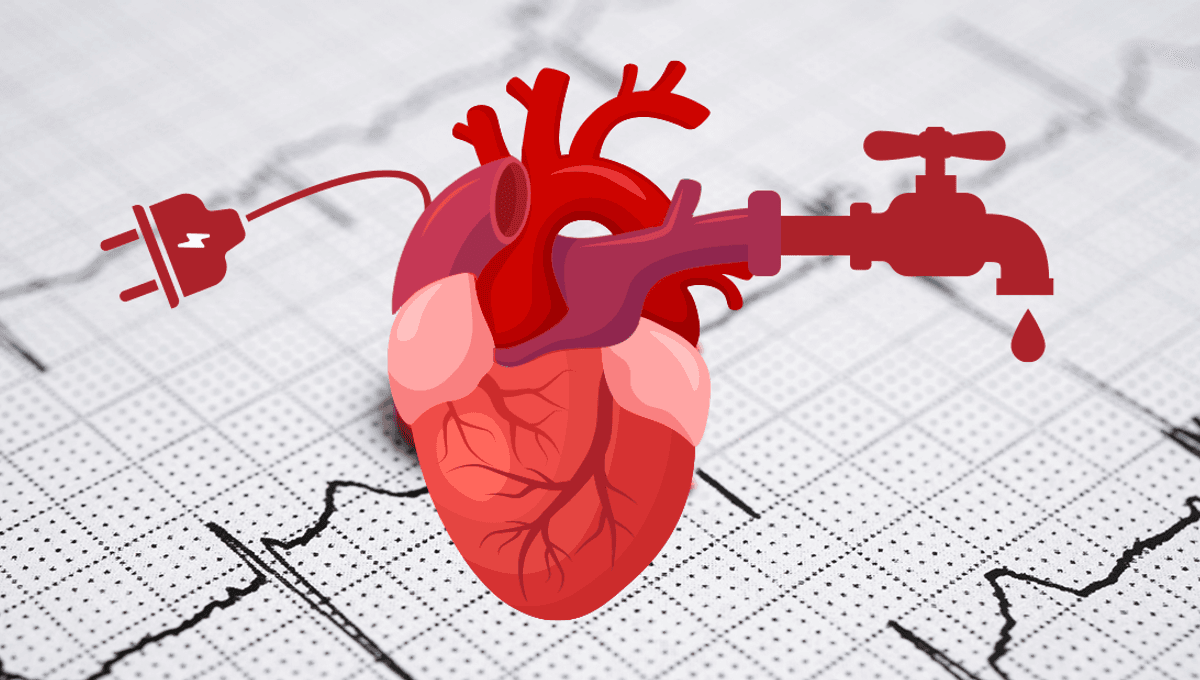
Heart attack, cardiac arrest – they’re basically the same thing, right? Nope – while they both involve the heart, they are in fact two very different things, with a variety of different causes, symptoms, and treatments.
One simple way to think about the difference between the two, as we’ll explain below, is as a matter of a plumbing problem versus an electrical one.
Heart attack
The “plumbing” problem refers to a heart attack. Also known as myocardial infarction, it’s caused when there’s not enough blood or oxygen reaching the heart muscle via the coronary arteries, the blood vessels that supply oxygenated blood to the heart.
This is usually the result of a blockage, which is most often caused by coronary heart disease. In this condition, there’s a buildup of fatty deposits lining the coronary arteries. These deposits are known as atheroma, and they can eventually break off from the artery wall. However, this triggers the formation of a blood clot, which can block the artery.
Although less common, a heart attack can also be caused by a sudden drop in oxygen levels in the body (known as hypoxia), stimulant drugs like cocaine and amphetamines, or a serious condition known as spontaneous coronary artery dissection, which means a sudden tear in the wall of a coronary artery.
In any of these cases, it means that the heart is not getting the crucial oxygen it needs to function properly. As a result, the heart muscle begins to get damaged and die, affecting its ability to function as normal.
This can lead to symptoms such as a feeling of severe pressure or pain in the chest that doesn’t get better with rest and may spread to the shoulders, neck, arms, or jaw, alongside sweating, shortness of breath, nausea, rapid or irregular pulse, dizziness or fainting, and unexplained weakness or fatigue.
Symptoms can vary between people, and it’s also worth noting that some people might not experience any symptoms at all. This is known as a silent heart attack, and is thought to occur in roughly one in three to one in five heart attacks. However, while someone might not be aware that it’s happened, this type of heart attack still causes damage.
Immediate treatment for a heart attack can include medications to make it easier for the heart to pump blood, break down clots, or stop further clots from forming, as well as oxygen therapy. Then, at a later point, someone may undergo surgery that helps to improve the flow of blood to the heart.
Cardiac arrest
While heart attacks are a plumbing problem, cardiac arrest can be thought of as an electrical one.
The rate and rhythm of our heartbeat are controlled by electrical signals that cause the heart muscle to contract and pump blood. When that electrical system doesn’t work properly, it causes the heart to beat abnormally. This is called an arrythmia, and it can lead the heart to stop beating entirely, meaning it’s no longer pumping blood – and that’s cardiac arrest.
Some of the confusion between cardiac arrest and heart attacks might lie in the fact that heart attacks can end up leading to cardiac arrest. That’s because the damage that occurs during a heart attack might lead to arrhythmia – but this is far from the only possible cause.
Other conditions and medical circumstances that can disrupt the heart’s rhythm include: cardiomyopathy, a group of diseases in which the heart muscle can get larger, weaker, thicker, or stiffer; congenital heart disease or defects; losing a significant amount of blood; drug overdose; and electrocution. As in the case of NFL star Damar Hamlin’s cardiac arrest back in 2023, it can also be the result of a blunt blow to the chest.
Regardless of the cause, cardiac arrest is incredibly serious. Without blood being pumped, the entire body is not receiving the oxygen it needs to function, meaning that vital organs like the lungs and brain stop working. When this happens, a person rapidly loses consciousness, either gasps for air or stops breathing entirely, and does not have a pulse.
Unless someone is treated immediately, a cardiac arrest is fatal. Depending on the circumstances, treatment typically begins with cardiopulmonary resuscitation – better known as CPR – where someone uses chest compressions to get blood flowing around the body again, until someone arrives with a defibrillator. This is a machine that electrically shocks the heart in an attempt to kickstart its electrical system and get it beating again.
The bottom line
Understanding the difference between a heart attack and a cardiac arrest is what allows medical professionals to know best how to treat someone – but both are considered to be medical emergencies and should be treated immediately. If you suspect someone is experiencing a heart attack or cardiac arrest, the most important thing to do is to call emergency medical services.
They might not be able to get there straight away, but can guide you through what to do. In the case of a suspected cardiac arrest, this may include hands-only CPR, and if one is available, the use of an automated external defibrillator – this might be signposted in your local community.
Acting, and doing so quickly, can make a significant difference. According to the American Heart Association, performing CPR can double or even triple someone’s chances of surviving cardiac arrest.
All “explainer” articles are confirmed by fact checkers to be correct at time of publishing. Text, images, and links may be edited, removed, or added to at a later date to keep information current.
The content of this article is not intended to be a substitute for professional medical advice, diagnosis, or treatment. Always seek the advice of qualified health providers with questions you may have regarding medical conditions.
Source Link: Heart Attack Vs Cardiac Arrest: What’s The Difference?